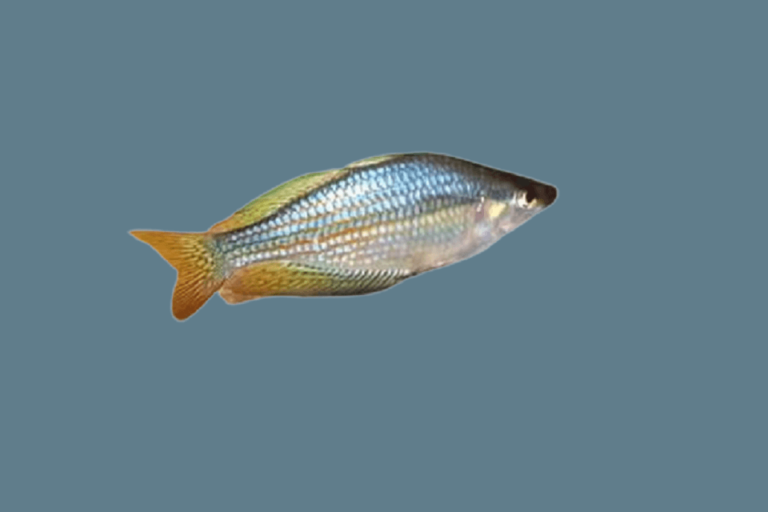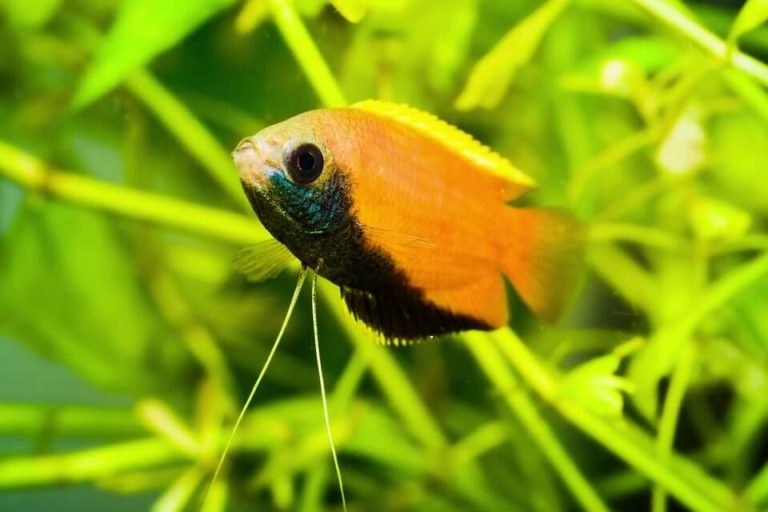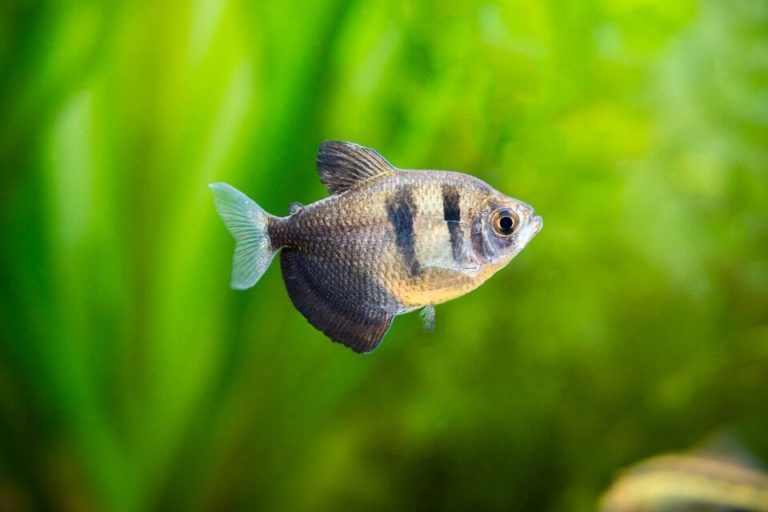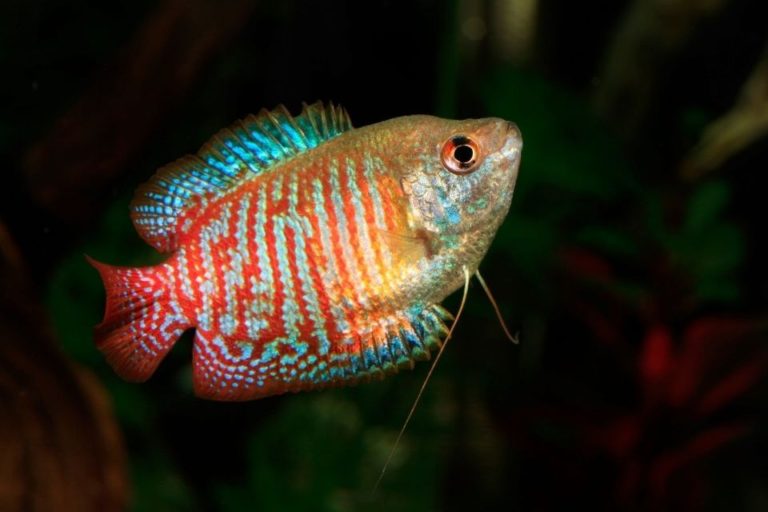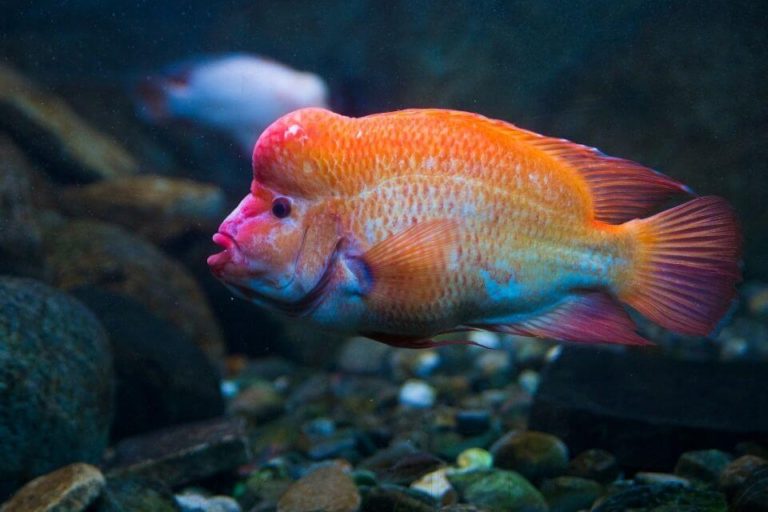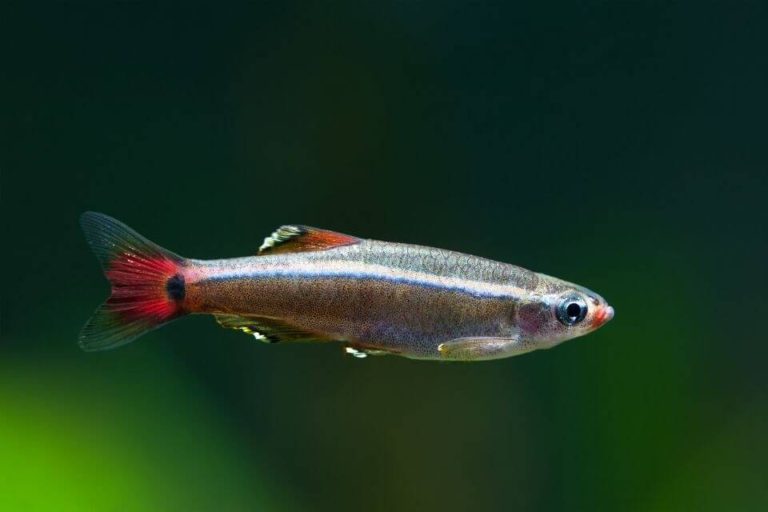Clown Pleco Care & Species Profile – Size, Lifespan, Tank Size & Feeding
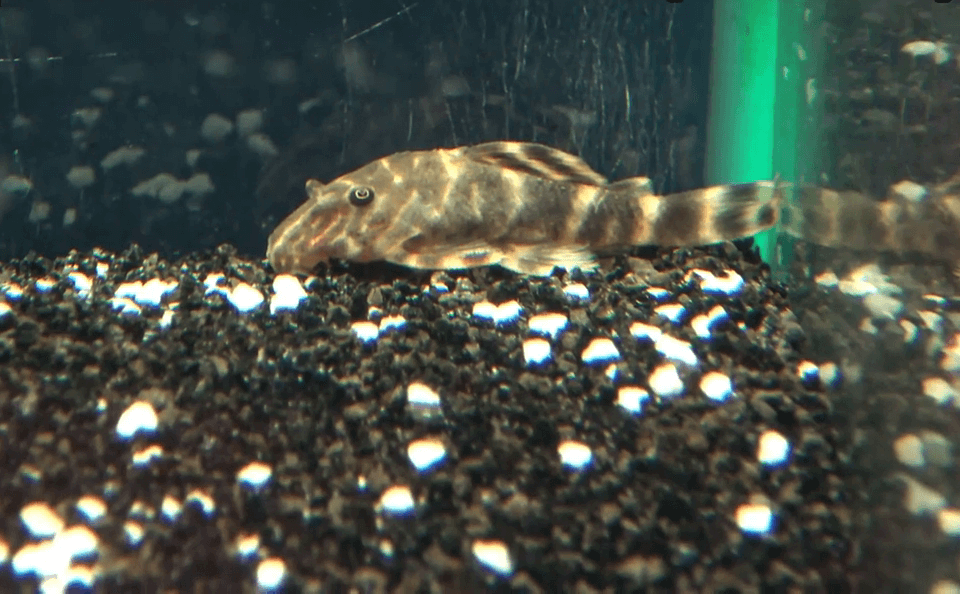
Clown Pleco is a well-known freshwater fish species among aquarists, and it can be found in almost all aquariums across the world.
In fact, these fish might be getting more sought after recently; this is because it is a fish that any dedicated aquarist can manage with ease as long as they have the proper condition these fish require.
As a result, the Clown Plecos are considered low-maintenance fish, which every aquarist loves.
The Clown Plecos are relatively small in size and are often used in aquariums worldwide due to their outstanding beauty. Even in maturity, these fishes tend to remain relatively small and often love to stay at the bottom of the aquarium.
In this Clown Pleco care guide, we will be discussing the basics of caring for Clown Pleco along with other essential aspects you need to know about this fish. Therefore, if you are considering having one yourself, then this guide will be best for you.
| Quick Facts: | |
|---|---|
| Common Names : | Clown Pleco, Clown Panaque, Clown Plecostomus, Ringlet Pleco |
| Origin : | Native to Colombia and Venezuela |
| Family : | Loricariidae |
| Scientific Name : | Panaqolus maccus |
| Care Level : | Easy |
| Temperament : | Peaceful |
| Social : | Community friendly |
| Diet : | Omnivores |
| Size (average) : | Up to 3.5 inches |
| Lifespan : | Up to 12 years |
| Breeding : | Egg layer |
| Minimum Tank Size: | 20 gallons |
| Tank Environment : | Freshwater, Sandy substrate, Floating Plants, Lots of hiding places, Rocks and Driftwood |
| Temperature : | 73°F – 83°F (23 – 28 °C) |
| Water Hardness : | 3 – 10 dGH |
| Water pH Level : | 6.5 - 7.5 |
Clown Pleco Overview
These Pleco species have few other alternative names such as Clown Panaque, Clown Plecostomus, and Ringlet Pleco.
Scientifically known as Panaque maccus, the Clown Pleco is a small and famous Loricariid species among the aquarists. These species are known to adapt very well to aquarium life.
You may have heard of a naming system L or LDA, followed by a number or numbers.
This naming system is used to name various members of the Loricariidae family since there are nearly 700 unique species that range from small to large and aggressive to peaceful. This species is assigned the names L162, L104, or LDA022.
As the Loricariidae family member, Panaque maccus is famous for having bony plates that cover their body instead of scales. They also have sucker mouths that they use in filtering their food from substrate.
These fish also belong to a family that is often referred to as suckermouth.
Clown Pleco Size
As stated earlier, the Clown Pleco size is relatively small. The average length of a Clown Pleco is approximately 3.5 inches. This Pleco fish can reach up to 4 inches in captivity when you provide optimal care.
Clown Pleco Lifespan
When in captivity, Clown Plecostomus is known to live for approximately 10 to 12 years. However, you cannot achieve this without a balanced diet, high-quality water conditions, and the reduction and prevention of stress.
These fish are often loved by most aquarists due to their incredible lifespan.
Origin And Distribution
Aquarium fishkeepers have kept these fish for a long time, and it first gained formal recognition in 1993. However, before then, this fish had been in the market and was still famous among aquarists.
Clown Plecos are said to originate from South America, specifically Colombia and Venezuela.
These fish live in the Amazon’s freshwaters in the wild, especially in the great Amazon River, Rio Orinoco Drainage, and Rio Las Marinas. They can survive in captivity as long as the optimum condition of the tank is met.
Appearance And Colors
When it comes to appearance, the Clown Pleco is gorgeous. They incorporate a series of distinct patterns, making them stand out irrespective of the type of fish they share a tank with.
These fish are black with a bright-colored band that stretches in different patterns across their body. In most cases, the bright side of this fish is either orange or whitish-yellow.
Additionally, the vibrancy and the pattern color of their body tend to vary significantly in relation to various genetic factors.
This aspect is common during development, so you can observe it when your fish is maturing. In the wild, the Clown Plecostomus also has brighter colors as opposed to those in captivity.
The body of these fish can perfectly fit into a standard Pleco mold. This means their large thick head along with their body from the dorsal fin upfront.
You will realize that from the beginning of their dorsal fin, these fish start to slim out all the way to the caudal peduncle.
The Clown Pleco has a relatively tall dorsal fin that tends to fan out. Additionally, they have large pectoral fins, and they often rest behind them while laying on a substrate.
When it comes to the surface area, these fish’s caudal fin is the same size as their dorsal fin. At times, you can see that they completely splay out, and at times they will compress it.
Clown Pleco Care
The best part about owning a Clown Plecostomus is that it is a low-maintenance fish. Taking care of a Clown Pleco is pretty straightforward, and aquarists across all experience levels can keep this fish without facing any challenges.
All that is required of you is to provide your fish with the proper environmental condition that will allow them to thrive. Additionally, you will need to stay consistent with assessing water quality for the survival of your fish.
– Clown Pleco Tank Size
The first thing you will need to keep in mind when taking care of your Clown Pleco is tank size. The minimum tank size for a Clown Pleco is 20 gallons.
Since they are relatively small fish, the Clown Plecostomus does not require lots of swimming and as a result, you do not have to invest in a massive tank to make your fish comfortable.
However, if you plan to have multiple Clown Plecos in a single aquarium, you will need to increase your tank size. You will need to add at least 10 gallons for every new Clown Plecostomus you add to your tank.
– Clown Pleco Tank Setup
As tank size, the tank setup is equally essential. When setting up a tank for Clown Plecostomus, you should try your best to mimic their natural environment. This means that you will need lots of driftwood.
In the wild, driftwood and Clown Pleco are one thing like peanut butter and jelly. This is a vital aspect you will need to consider since these fish love hiding, exploring, and snacking on driftwoods.
At the bottom of the tank, you should use sand as the substrate. Since they love spending most of their time at the bottom of an aquarium, using sand will prevent your Clown Plecostomus from scratching itself on sharp gravel or edges.
For decorations, consider throwing in some plants and rocks. These décors will offer hiding places for your fish as well as a perfect spot for algae to grow.
Clown Plecos are nocturnal fish; they do not like bright lights and will often hide in a cave or under a rock during the day unless your aquarium is covered by floating décor or plants.
Therefore, avoid using bright light and minimize turning on lights during the night since these fish prefer darkness over light. Like most Catfish, Clown Plecostomus are eating machines and tend to produce a significantly high amount of waste for their size.
These fish consume primarily fibrous material, and as a result, they need a high-quality filtration system equipped with replaceable media that will chemically and mechanically get rid of toxins and wastes from the aquarium.
Usually, Clown Pleco prefers living at a moderate rate of water flowing at the bottom of their aquarium. This aids in preventing the development of dangerous hypoxic areas.
In addition to a high-quality filtration system, you might also consider using an air stone to improve the circulation system.
– Water Parameters
Clown Plecostomus prefers living in warm waters with temperatures ranging from 73 to 83 degrees Fahrenheit when it comes to water parameters.
You might consider using a heater to mimic season variations as well as raising and lowering the tank’s temperature if you want your fish to spawn.
The ideal pH for Clown Pleco is between 6.5 to 7.5. Additionally, these fish are known to tolerate both soft and hard water conditions. This makes them relatively easy to take care of and the best fish for a novice aquarist.
- Water Temperature: 73°F – 83°F (23 – 28 °C)
- Acidity Levels: 6.5 – 7.5 pH
- Water Hardness: 3 – 10 dGH
– Suitable Aquarium Plants
Since these fish species are bottom dwellers, you might think of some suitable plants that may float. Floating Aquarium plants would be best for them. There are some recommended plants such as:
– Common Diseases And Prevention
Clown Plecos are susceptible to the same aquatic diseases as any other fish (including Ich and White Spot). However, these fishes are generally healthy and very hardy species as long as their water is consistently kept clean and fed a well-balanced diet.
These fishes have no specific disease that plagues their species, which is undoubtedly a significant advantage to owning one.
Although these fish are susceptible to common aquatic illnesses, these conditions are easily preventable. The leading cause of illness among Clown Pleco is the poor quality of water.
Therefore, when you make a consistent change to water while monitoring the water parameters and feeding them a well-balanced diet, your Clown Plecostomus will be fine, and they will live to reach their optimum lifespan.
Clown Pleco Diet And Feeding
Clown Pleco diet comprises primarily plant matter like algae and wood, specifically driftwood. Allowing your Clown Plecostomus to feast on wood will improve their digestive system. As opposed to adult Clown Pleco, infants tend to feast more on algae.
Additionally, feeding your fish algae food is equally essential instead of depending on one source of food. Other foods you should consider feeding your Clown Pleco include vegetables like mashed potatoes, shelled peas, zucchini, cucumber, and lettuce.
An ideal diet of Clown Plecostomus should consist of several things they consume in the wild and supplement foods that are not convenient. However, you should avoid overfeeding them as you try to feed them nutrient-rich foods.
Algae is one of the vital pieces of diet; though they cannot live on algae alone as the primary food source, they will receive lots of nutrition value from algae.
You might facilitate the growth of algae within their habitat by decorating the tank with rocks, driftwood, and plants. Try and use surfaces that will allow algae to grow on them.
Additionally, a good Clown Pleco’s diet should consist of various plant-based foods that tend to sink. Algae wafers are considered the best choice since they are vegetables like cucumber, zucchini, peas, and lettuce.
Lastly, their diet should also include some meat to aid them in getting some reliable protein sources. Daphnia and bloodworms are excellent choices for a Clown Plecostomus.
However, these foods should be used as occasional snacks about two to three times a week and not every day.
How Can You Tell If A Clown Pleco Is Male Or Female?
Like any other small fish, identifying the sex of a Clown Pleco can be relatively challenging. However, to identify whether a Clown Pleco is a male or female, you will have to wait until maturity.
Once they mature, a male Clown Pleco will develop enamel growth on their backs. Additionally, a male Clown Pleco can have more barbels than their female counterparts; however, this is not always the case.
Clown Pleco Breeding
Breeding a Clown Plecostomus is full of conflicting opinions among hobbyists. Some individuals claim that breeding Clown Pleco is relatively easy, while others claim that the whole process is significantly challenging even to attempt it.
Therefore, to set the record straight, breeding Clown Pleco is possible; however, the whole process will require some setup. First and foremost, you will require to set up a breeding aquarium for your fish.
This tank should follow the same water parameters as their standard tank. You should equip it with plenty of driftwood along with places to hide because it is here where your fish will spawn.
One of the common strategies used in placing a simple wooden cave in your tank and your fish will use it.
Consider lowering the tank’s temperatures leading to the breeding process. Doing so will mimic the rainy season, which is the time of the year these fish spawn while in the wild.
Additionally, consider raising the pH level of your tank during this period. Another thing to consider is adding their protein intake; this will stimulate their breeding.
Once they lay eggs in their caves, male Clown Pleco will guard that area until they hatch after a few weeks.
Once this happens, separate them from the adults and start feeding the newborns with a mix of algae, protein, and driftwood.
Behavior And Temperament
The overall temperament of Clown Pleco is very mellow as well as peaceful. They love spending most of their time at the bottom of the tank, and they will rarely show any interest in other fish.
Most of the time, you will find this fish hunkering near driftwood or moving at the bottom of the tank while scavenging. These fish temperaments can change when you have more than one male in a single tank.
Two or more Clown Plecos can exhibit aggression over territory.
Clown Pleco Tank Mates
These fish are compatible with different types of fishes out there, including;
- Ember Tetra
- Gouramis
- Chili Rasboras
- Dwarf Gourami
- White Cloud Minnow
- Pygmy Corydoras
- Harlequin Rasboras
Clown Pleco is known to do well as a community and often live peacefully with other fish. Except when they seldom become aggressive with other fish to protect their territory.
Frequently Asked Questions
Since the above Clown Pleco care guide provided all the required details, we do not have much to talk about, but wrapping up a few questions and answers that might help you out.
How Many Clown Plecos Can I Put In A 55 Gallon Tank?
Generally, a Clown Plecostomus should be kept in a minimum tank size of 20 gallons. You will need to add 10 gallons for every new fish you add to your tank. This means that for a 55 gallons tank, the maximum number of your fish should be 4 Plecos.
Are Clown Plecos Aggressive?
No, they are not typically aggressive. However, they can become aggressive when you keep more than one male in a single aquarium.
Do Clown Pleco Eat Other Fish?
No, Clown Plecostomus primarily feeds on plants. This means that they do not feed on other fish. They will peacefully leave with other peaceful fish species in the same tank setup.
Do Clown Plecos Have Teeth?
Like other genus Panaque members, Clown Plecos have spoon-shaped teeth that tend to be wider at the tip than the base.
Where Clown Pleco For Sale?
Clown Pleco is a famous freshwater fish among aquarists, and as a result, you can easily find Clown Pleco for sale in any aquarium pet shop or eCommerce site such as eBay.
What Is the Average Clown Pleco Price?
Clown Pleco is said to go for approximately $11.99 in the US market. but for the other regions, it depends on the availability and demand.
Conclusion
Any aquarist, whether new or experienced, can own a Clown Pleco since they are relatively easy to maintain. After going through this care guide, you can comfortably purchase a Clown Plecostomus and take care of it with the utmost ease.
As we wrap up, we hope you have found this article beneficial. If you have thoughts and questions please share them with us below.


